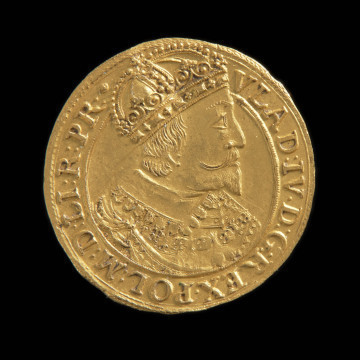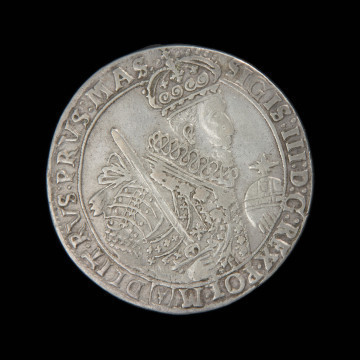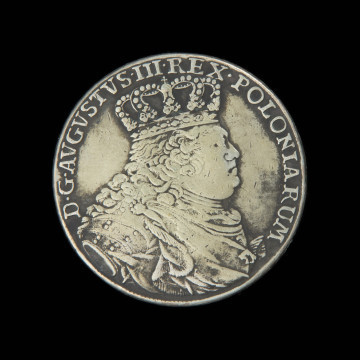The history of minting in Toruń began between 1233 and 1238 when the Teutonic Knights fulfilled their obligation to establish a mint in the Chełmno Land. The mint in Toruń operated until 1765, frequently with longer breaks. This activity can be divided into several periods. Between 1233 and 1454, the mint worked for the Order. From 1454 to 1457, it was owned by the Prussian States, and from 1457 to 1492 it functioned as a municipal institution.. In 1528, the mint was taken over by King Sigismund I the Old (1467–1548), who kept it until 1535. In 1630 the municipal mint was re-established and functioned until 1765. The thaler of Władysław IV Vasa (1595–1648), dated 1637, comes from the last period of the factory’s operations. In accordance with the ordinance of 1627, small coins could not be minted in the Kingdom of Poland. The mint in Toruń therefore produced ducats, half-thalers and thalers. Two types of representation of the ruler were placed on the thalers. The first is a half-figure in armour and with regalia, appearing on coins minted between 1633 and 1642. The other is a bust in ceremonial robes, placed on thalers from 1643 to 1648. On all of them there was the municipal coat of arms in an oval shield held by an angel, while the inscription on the rim informed that the coin had been struck in Toruń. The initials II (JJ) placed on the sides of the escutcheon under the date of issue belong to Jakub Jacobson, the mintmaster of Toruń in 1629–1639. The town council, controlling the mint, violated the provisions of the minting privilege of 1457, which guaranteed the Polish king half of the profits from the mint, and during the reign of Jan Kazimierz (1609–1672) it even conducted its own monetary policy. When Stanisław August Poniatowski (1732–1798) ascended to the Polish throne, minting issues brought the city council into sharp conflict with the king. The last coins were struck in the Toruń workshop in 1765, after which the mint was closed.
Mieszko Pawłowski



